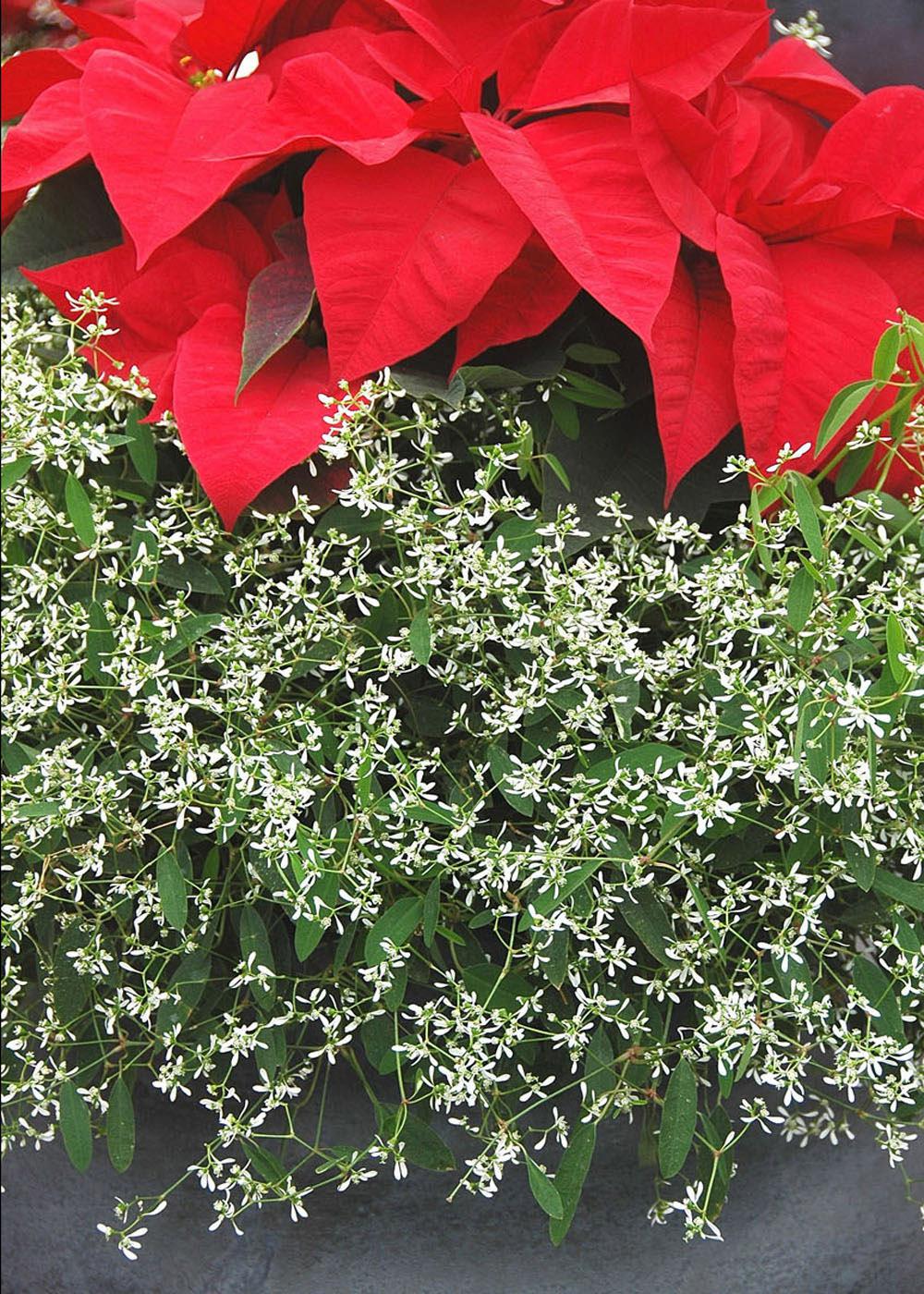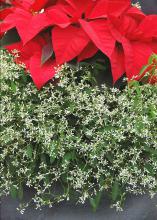Information Possibly Outdated
The information presented on this page was originally released on December 15, 2010. It may not be outdated, but please search our site for more current information. If you plan to quote or reference this information in a publication, please check with the Extension specialist or author before proceeding.
Poinsettias offer color and variety
With their brightly colored bracts full of holiday cheer, poinsettias are truly the quintessential Christmas plant.
The range of available poinsettia colors is truly phenomenal. Red, white, pink, maroon, speckled and marbled are just the tip of the iceberg. Recently, you may have noticed orange and even blue poinsettias with sparkles. Growers use plant dyes to change the bract colors and expand the variety of colors available to consumers.
There are plenty of poinsettias to choose from at your favorite garden center or store, so take your time to select the very best. Look for signs of broken stems and branches. Most poinsettias are purchased in sleeves that can hide these defects.
Bracts should be completely colored and fully expanded. If they aren’t, the plants were probably shipped before they were completely ready.
Poinsettias used as components of combination containers are becoming popular. Southern Gardening has suggested combining poinsettias with the Mississippi Medallion winner Diamond Frost euphorbia. Both are in the euphorbia family, and planted together, the poinsettia looks like it is growing on a bed of frost.
This year, I have enjoyed seeing the contrast of red poinsettia against pure white chrysanthemum. Add English ivy, and you have a container that follows the pleasing thriller, filler and spiller formula.
Follow these care tips to keep your poinsettia looking good long after the Christmas holidays.
Poinsettias need a comfortable room temperature and at least six hours of indirect sunlight daily. When they are grown in the greenhouse, the temperature is kept about 72 degrees during the day and 60 degrees at night. When you provide temperatures close to this, you can prolong the life of your poinsettia.
Don’t let the leaves or bracts touch the window glass because cold outside temperatures are readily transferred through the glass. A poinsettia may look great by the front door when guests arrive, but the sudden temperature changes caused by the door’s opening and closing can damage the health of the plant.
Temperatures below 50 degrees harm the foliage and colorful bracts of poinsettias. Remember this on the way home from purchasing your poinsettias, and be sure to cover them carefully and avoid breaking any branches or stems.
Do not overwater your poinsettias, as they are sensitive to wet feet. Make sure the potting mix feels dry to the touch before watering, and be sure the decorative sleeve has drainage holes.
Contrary to widely reported information, poinsettias are not poisonous to pets. According to the American Society for the Prevention of Cruelty to Animals, eating poinsettia leaves simply induces gastrointestinal tract irritation. But as with all ornamentals and houseplants, keep them out of reach of pets, as they are not meant to eaten by animals.
A more likely risk is that a person with sensitive skin could develop a skin rash or contact dermatitis from touching the poinsettia’s milky sap, which is closely related to latex. To be safe, always wash your hands after handling your poinsettia.
So this Christmas, pick plenty of your favorite poinsettia colors to brighten your home.









